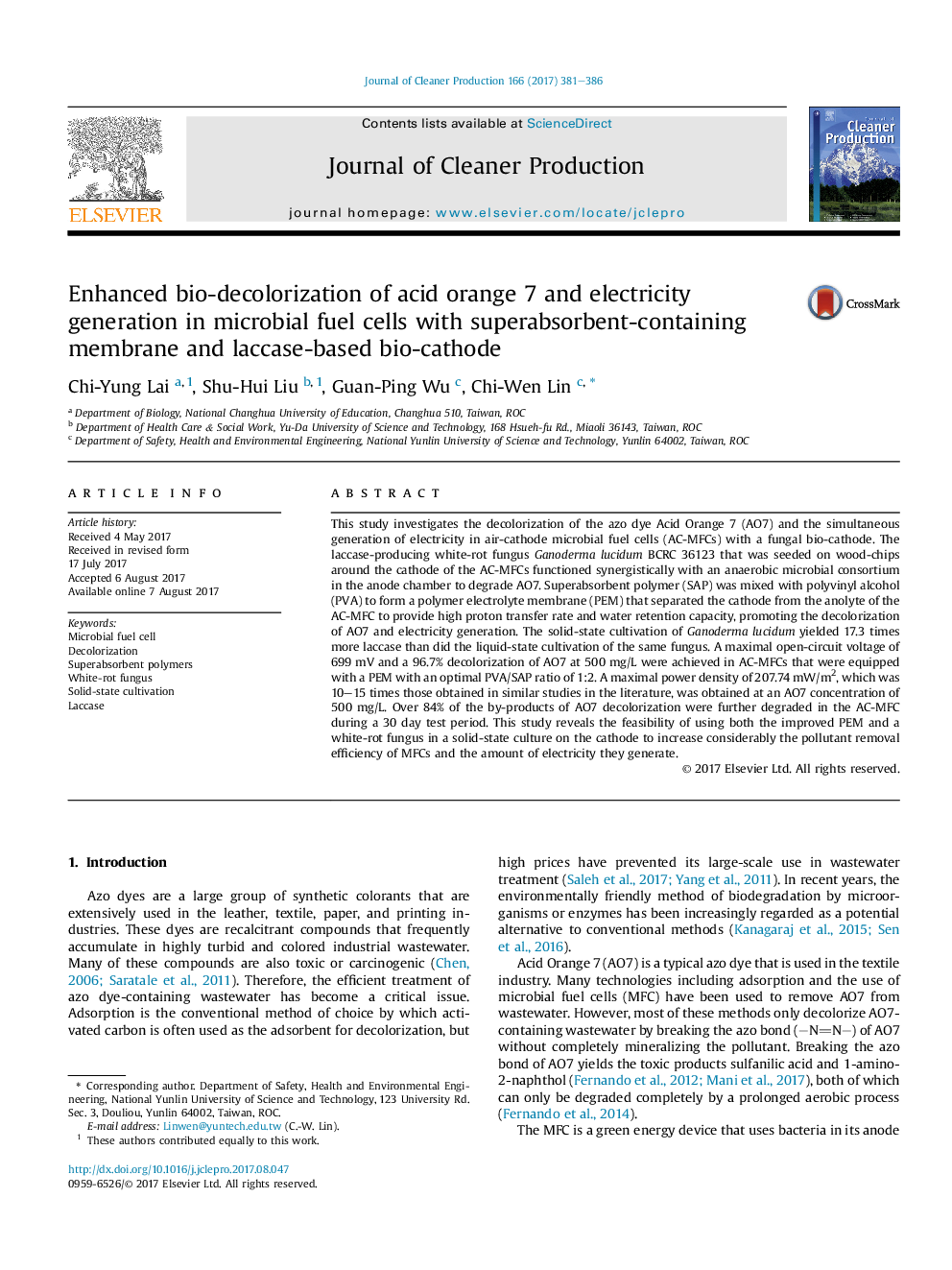| Article ID | Journal | Published Year | Pages | File Type |
|---|---|---|---|---|
| 5479914 | Journal of Cleaner Production | 2017 | 6 Pages |
â¢A superabsorbent-containing membrane was used to reach high proton conductivity.â¢Solid-state cultivation produced more laccase than liquid-state cultivation.â¢By-products formed during AO7 decolorization can be further degraded in the MFC.â¢The obtained power density was significantly higher than the results in the literature.
This study investigates the decolorization of the azo dye Acid Orange 7 (AO7) and the simultaneous generation of electricity in air-cathode microbial fuel cells (AC-MFCs) with a fungal bio-cathode. The laccase-producing white-rot fungus Ganoderma lucidum BCRC 36123 that was seeded on wood-chips around the cathode of the AC-MFCs functioned synergistically with an anaerobic microbial consortium in the anode chamber to degrade AO7. Superabsorbent polymer (SAP) was mixed with polyvinyl alcohol (PVA) to form a polymer electrolyte membrane (PEM) that separated the cathode from the anolyte of the AC-MFC to provide high proton transfer rate and water retention capacity, promoting the decolorization of AO7 and electricity generation. The solid-state cultivation of Ganoderma lucidum yielded 17.3 times more laccase than did the liquid-state cultivation of the same fungus. A maximal open-circuit voltage of 699Â mV and a 96.7% decolorization of AO7 at 500Â mg/L were achieved in AC-MFCs that were equipped with a PEM with an optimal PVA/SAP ratio of 1:2. A maximal power density of 207.74Â mW/m2, which was 10-15 times those obtained in similar studies in the literature, was obtained at an AO7 concentration of 500Â mg/L. Over 84% of the by-products of AO7 decolorization were further degraded in the AC-MFC during a 30 day test period. This study reveals the feasibility of using both the improved PEM and a white-rot fungus in a solid-state culture on the cathode to increase considerably the pollutant removal efficiency of MFCs and the amount of electricity they generate.
